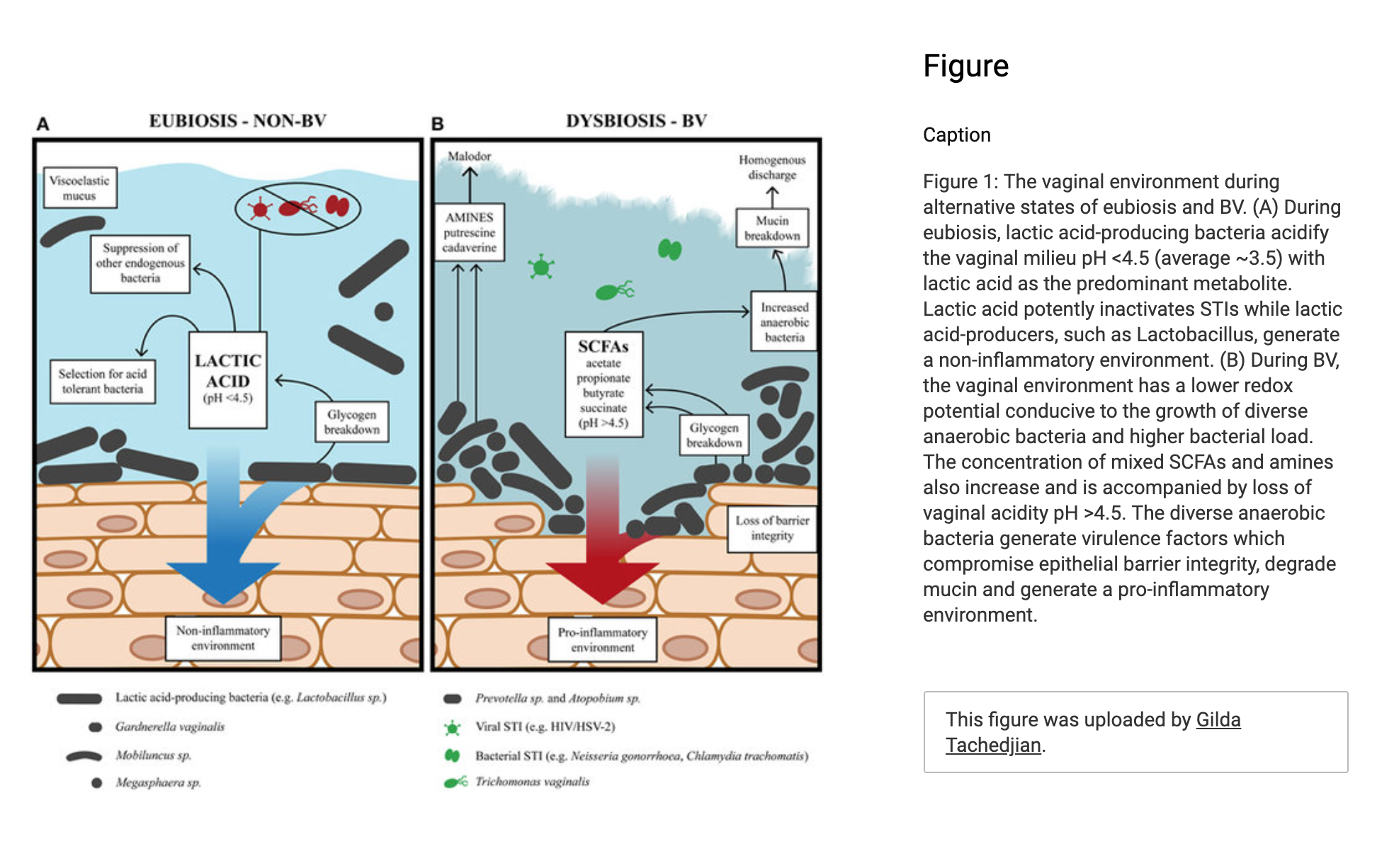Aboriginal microbes of the vagina
"I am in People as people go like a vagina *,The sensation that the sacred attitude towards the emergence of life into the world disappears in us, just like the root microbes (see The root microbes / Habr - Habr ). The old attitude towards the vagina as a sacred, life-giving organ, is retained only among indigenous peoples. My recent literary search and experience of living with indigenous peoples (see d / f "Bacteria. War of the Worlds" ) led to an interesting understanding of vaginal health, its significance for the evolution of humanity. The process of childbirth and the transfer at this moment of microbes from mother to child can play a central role, and the ability to manipulate the vaginal microbiome can be used for the good of the planet.
there is a real man ",
complaint book
Moscow cafe
"People like people" ,
mid 2000s
* Moisture (lat. Vagina - sheath, case)
My hypothesis is given below.
The problem of bacterial vaginosis
Bacterial vaginosis (BV) is a widespread vaginal disease, according to some estimates, affecting up to 30% of women in reproductive age in developed countries and up to 50% in hot countries with poor economies. According to the observations of specialists, up to half of cases are asymptomatic. BV does not have a clear definition and is described as a violation of the normal flora of the vagina. Symptoms are discharge, foul odor and itching.
Bacterial vaginosis is a precursor of STDs, infertility, miscarriages, premature births. BV removes the natural barrier to the spread of HIV. Naturally, the symptoms of the disease affect self-esteem, harmony in relationships and the overall quality of life.
')
The recommended treatment methods for today: the use of oral and intravaginal antibiotics. By some estimates, relapses within 12 months reach 60-80%. Once again: "The existing treatment is only an improvement of no more than 12 months."
The criterion for diagnosis is the Nugent scale, corresponding to the presence of lactobacilli, gardnerellas and members of the genus Mobiluncus . Points 0-3 correspond to a healthy state, 4-6 - intermediate and more than 7 coincides with the clinical manifestations of BV.
Vaginal microbiome
Studies of vaginal microbiome in healthy women and women with BV revealed typical microbiome changes characteristic of the disease. Surprisingly enough, the number of vaginal microbiome configurations is not high (Fig. 1). Apparently, this is due to the special functional requirements for representatives of the microbiome and a strong connection with the host organism. There are 4 “healthy” variants of the composition, in which lactobacilli predominate; one in which lactobacilli are not the predominant species and a separate composition variant with a variety of pathogenic flora corresponding to BV.

Fig 1. Correspondence of lactobacillus clusters, Nugent scale and pH. ( reference to the source ). “The relationship between the vaginal bacterial communities is visualized using the principal component method. Communities dominated by Lactobacillus species and which represent community groups I, II, III, and V are shown in each of the four outer tips of the tetrahedron, and communities of group IV are shown in the inner top and are shown in the inset. (A) Each dot corresponds to one microbiome and is colored according to the proportions of phylotypes in each community. (B) The pH of each vaginal community shown in A. (C) The Nugent score of each vaginal community shown in A. "
For European and Asian women, healthy combinations refer to lactobacilli in 90% of cases, in black and Hispanic women, lactobacilli change occupy no more than 60% of healthy combinations. The first lactobacilli of the vagina were described in the 19th century by Doderlein.
“The German obstetrician-gynecologist A. Doderlein (1860-1941), having studied the vaginal flora, opened the vaginal stick (Doderlein's wand) in 1887 to help protect the woman's genital canal from pathogenic microbes. They have developed new obstetric and gynecological operations: lateral dissection of the pelvic ring in the narrow pelvis, extraperitoneal cesarean section, etc. ”The correspondence between the health of the vagina and the predominance of lactobacilli has been known for more than a hundred years, and today 4 main drivers of phylotypes are shown: L. crispatus, L. inners, L. jenseni, L. gasserii . Some of them are observed in inversely proportional relations among themselves, signaling competition for an ecological niche. For the health of the vagina, it is necessary to maintain the presence of several main types of lactobacilli simultaneously.
(From the textbook "History of Medicine", M, 1981 / Ed. P.E. Zabludovsky, G.R. Kryuchok, M.K. Kuzmin, M.M. Levit)
A healthy vagina is characterized by pH levels of 3.5-4.5 in most healthy European women. High acidity is maintained by the synthesis of lactic acid by representatives of lactobacilli (Fig.2). The vagina does not have its own secretion system. The secret, which contains enzymes (amylases similar to salivary) and desquamated cells, comes from the cervical canal, also in this fluid contains glycogen, which feeds the target bacteria. The amount of fluid in 24 hours is normally from 1 to 4 ml.
It has been shown that high acidity and lactic acid itself is the main antimicrobial factor protecting against pathogens. In addition, lactobacilli synthesize highly specific antimicrobial peptides.
With BV, the pH level usually exceeds 5. In fact, there is a closed cycle of the disease, the predominance of pathogenic flora reduces the amount of lactobacilli and reduces the amount of lactic acid produced by them. The rupture of such a cycle can be achieved by antibiotics, an increase in acidity and the sharing of a large number of lactobacilli (as part of probiotics).
Interestingly, one of the most ancient methods of correction is considered to be an Ayurvedic approach using fermented cow milk.

Figure 2. Normal flora and bacterial vaginosis. ( link )
In the menstrual cycle due to blood flow, the pH increases to 7, and iron in the blood is a provoking factor for the growth of pathogens. The mechanism of return to normal is supported by the highly specific composition of mucosal polysaccharides, however, systemic inflammation and a diet that does not provide nutrition for the growth of mucose may disrupt the process. More interesting is that intestinal probiotics often help to return to homeostasis.
Blood stasis (due to the use of hygiene products), regular sex life (the introduction of external bacteria), the use of deodorants and lubricants are risk factors for BV.
Probiotics
One of the solutions for restoring a healthy balance is intravaginal probiotics, the global market for probiotics is estimated at $ 60 billion, vaginal probiotics occupy at least 5%. The most successful clinical trials show the effectiveness of probiotics for reducing the percentage of relapses after antibiotic therapy. In addition, some studies show efficacy in the treatment of BV, without other means, however, no assessment of relapse or long-term recovery of the microbiota is given.
The most promising are cocktails from strains (most often several strains of lactobacilli are used, but not of vaginal origin), most likely individual strains have limited potential for engraftment (from 30 to 60 percent), therefore cocktails allow increasing the chance, if at least one of the bacteria fit. Moreover, for different strains of lactobacilli are characterized by different optima of the enzyme system in the production of lactic acid. The task of a cocktail of probiotics is to quickly raise the acidity in the vagina, increase the number of lactobacilli and their production of antibacterial peptides.
Interesting probiotics
Peachlife contains many strains, although the selected strains do not seem indibiome:
Bifidobacterium Longum, Bifidobacterium Lactis, Lactobacillus Salivarius , Lactobacillus Casei, Lactobacillus Acidophilus, Lactobacillus Brevis, Lactobacillus Fermentum, Lactobacillus Paracasei, Lactobacillus Plantarum, Lactobacillus Reuteri, Lactobacillus Rhamnosus.
Canesflor contains a proprietary strain of lactobacilli with good data on reducing recurrences and on its ability to adhere to the surface.
Purfem sodrezhit two strains, one of which I refer to Lactobacillus gasseri as indibiome.
LACTIN-V is a very progressive strain, some good research on it and, again, indibiome, as it is based on Lactobacillus crispatus CTV-05 . There is a compelling pipeline for clinical trials and antibiotic testing for BV recurrence.
Microbiome of the newborn
Evolutionarily it happened that when passing through the birth canal, the baby is colonized by the mother’s microbes. They determine the composition of the microbes of its intestines, it is known that caesarean, in which microbes of the mother’s skin are colonized, is associated with a greater number of allergies and a high risk of colitis. Vaginal seeding technology is also used, when the microbiome of the mother's vagina is transferred to the child by a cotton swab to the tongue, the current risk of infection outweighs the possible benefits.
The proportions between the tissues, the correct immunity, protection from the first diseases - the child can get all this with the native microbes from the mother. These microbes she received from her mother. On the face of some evolutionary process, which is now interrupted by environmental factors. Interestingly, at the species level, a less healthy generation appears both physically and mentally.
Separately, I note that the article does not oppose modern medicine, and especially Cesarean section, rather the opposite, asks to pay attention to the previously unexplored side of the process - the transfer of microbes. It is obvious that you can safely transfer germs from mother to child after this operation. Moreover, it is possible and necessary to prepare a woman and a microbiome for birth.
New generation
I have a question: “Is vaginal morbidity a mechanism for controlling the development of civilization, a deterrent?”
The question is rather rhetorical, and it is obvious to me that our informed choice of food, hygiene products, and attitude to the environment can affect the next generation, especially in our own kind. Finally, using probiotic technology, it is possible to create a healthier generation by adding percentages of efficiency to the entire civilization, or at least the country.
Source: https://habr.com/ru/post/449414/
All Articles